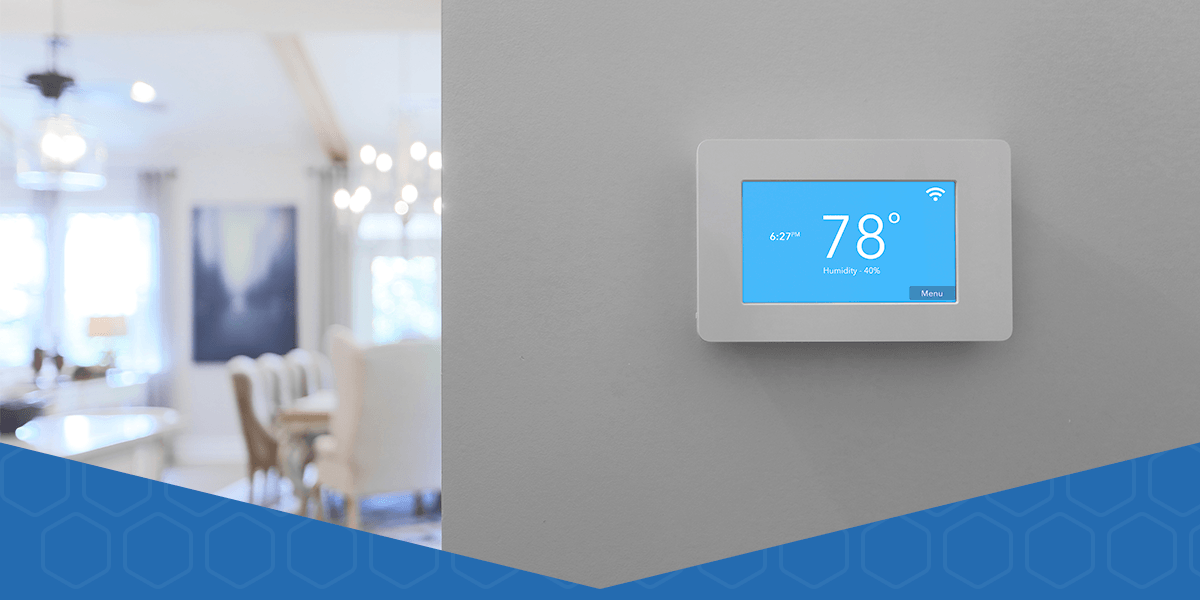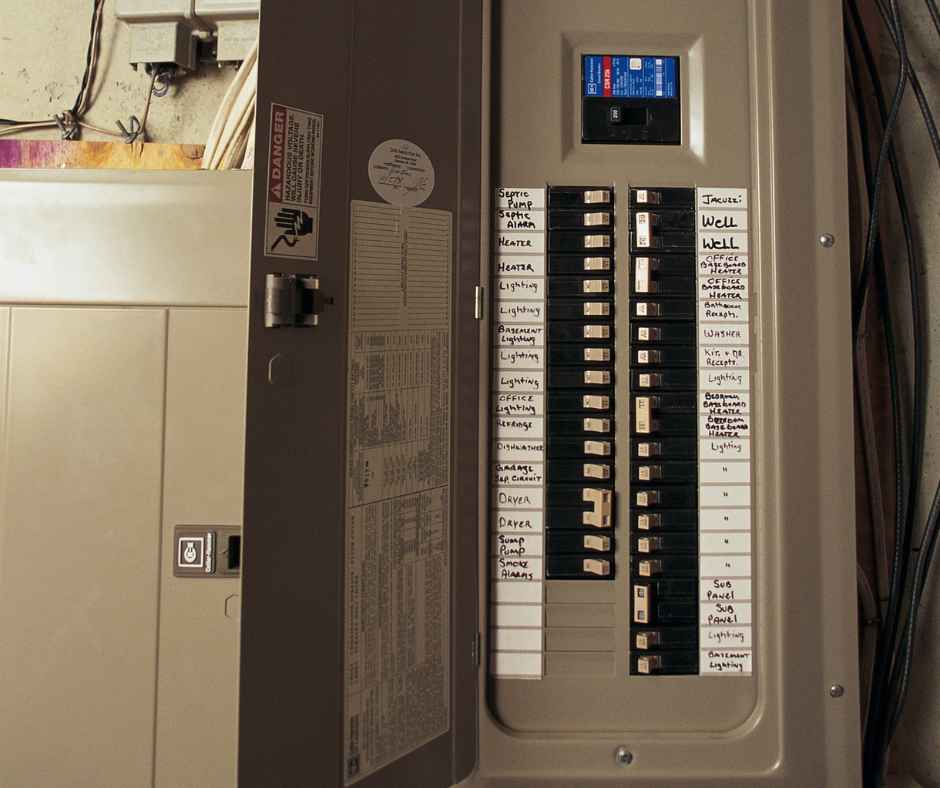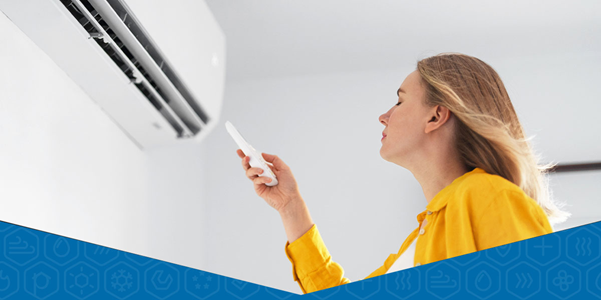

Guide to Smart Thermostats
March 14, 2024
A thermostat is essential for regulating home temperatures and improving your comfort. Smart thermostats are intuitive devices that exceed the usual cooling and heating capabilities. They learn from your behavior to enhance your home’s energy efficiency and air quality and make your environment more enjoyable.
With this comprehensive guide to smart thermostats, you can learn how to enhance your quality of life and home’s value with little human input.
What Is a Smart Thermostat?
A smart thermostat is a Wi-Fi-enabled or automated temperature-regulating system. It offers remote control features, allowing you to adjust and manage your home temperatures from your smartphone, tablet and other devices. Smart thermostats enable you to change or program your central heating and cooling to your temperature needs, preferences and weather conditions.
How Do Smart Thermostats Work?
Smart thermostats use advanced software to learn heating and cooling patterns and automatically adjust internal temperatures to your preferences and weather conditions. They can also manage and reduce your energy usage. A smart thermostat system communicates temperature preferences to your HVAC system, which you program or set in the companion app.
- The standard wire: This cable plugs into and sources power from your HVAC system.
- Thermostat control: A smart thermostat detects your home’s internal temperatures using built-in algorithms. It sends your heating and cooling preferences to your HVAC system, allowing it to adjust temperatures.
- The app: The app communicates the temperature settings you command from your smartphone or other connected devices to the thermostat control unit.
Benefits of Smart Thermostats
A smart thermostat can reduce your energy usage and bills, enhance heating and cooling convenience and provide comfort. Here are some additional advantages to consider.

Reduced Energy Consumption
Smart thermostats use intelligent temperature management to adjust heating and cooling automatically. These devices can detect temperature changes and optimize conditions. Instead of keeping your HVAC system running 24/7, smart thermostats learn from your behavior and turn on and off at ideal times to reduce energy usage.
Enhanced Convenience
You can conveniently monitor and control your home temperatures from anywhere using your phone or other smart devices. This advanced interface sends alerts to notify you about your energy use, temperature trends and maintenance needs. You can manage your home conditions, energy usage and thermostat efficiency.
Improved Comfort
Smart thermostats are compatible with various AI devices, including voice-controlled assistants like Google Assistant or Amazon Alexa, offering a fully automated system. You can use voice commands to change the temperature in various rooms throughout your house. Technology integration also helps you automatically adjust your conditions to the weather and times of the day, enhancing your convenience and comfort.
Common Smart Thermostat Problems
While smart thermostats offer numerous benefits, they can have some downfalls when installed and programmed incorrectly.
- Improper placement: Placing your thermostat near heat sources like direct sunlight and vents can result in the sensors registering higher temperatures than your room condition. Conversely, positioning your device near windows and openings can lower temperature readings. These readings cause your HVAC system to adjust the temperature inaccurately.
- User error: Incorrectly programming your thermostat or selecting the wrong settings can lead to temperature imbalances and inaccurate condition preferences.
- Faulty sensors: Smart thermostats have sensors for detecting temperature and movement. It can tell when someone is in the room and adjust temperatures accordingly. If these sensors malfunction, your device won’t accurately read room temperatures and occupancy, leading to imbalanced or inappropriate conditions.
- Incorrect calibration: If your thermostat isn’t pre-calibrated, you must set it to ensure accurate temperature readings. An incorrectly calibrated device can turn your HVAC on or off at the wrong times.
What to Consider When Deciding on a Home Thermostat
While different thermostat models offer various features, some might have specs more suited to your goals and needs. Considering them can help you identify the features that are essential or suitable for you.
Remote Monitoring
Consider a thermostat with quality sensors if you want the convenience of controlling and monitoring your temperatures anywhere and anytime. With reliable sensors, your device can accurately detect temperature fluctuations and room activity and optimally adjust your internal conditions. For example, the thermostat sensors will notice inactivity and turn off or modify your temperatures to save energy if you are away from home.
Voice Command
Do you want to feel optimal temperatures when you walk in your front door? Or, maybe a cool breeze improves your sleep quality. If these options sound perfect, consider a thermostat with voice control technology. Smart thermostats are compatible with numerous voice assistants like Google and conveniently sync with your devices.
Dual Operation
Getting used to digital commands and programming can take time, especially after using an older, conventional thermostat your whole life. You might prefer manual temperature settings at first.
Fortunately, various smart thermostats offer dual operations. You can manually change the temperature anytime using the controls. Or, once you’ve programmed your thermostat, you can leave it up to your smart device to adjust your conditions. The choice is yours.
Energy Monitoring
If your most significant concern is improving energy efficiency and lowering utility bills, consider thermostats with advanced energy monitoring features. Some thermostats send reports identifying energy or high consumption peaks, while others provide alerts and notifications. Installing a device with these features can make you more aware and proactive about conserving energy and reducing waste.
Air Quality Sensors
If improving indoor air quality is your chief concern, you should consider thermostats with built-in sensors. These detectors measure volatile organic compounds and pollutants in the air. When your device senses high contaminant levels and poor air quality, it can automatically adjust settings like turning on ventilation to purify the atmosphere.
Air quality sensors can be excellent in reducing indoor pollution and providing healthy air quality, which can be especially beneficial for family members with allergies, heart disease and respiratory illnesses.
FAQs About Smart Thermostats
Here are some answers to frequently asked questions about smart thermostats.
- What are the differences between programmable vs. smart thermostats? User convenience and energy savings are the primary differences between programmable and smart thermostats. While you can set programmable thermostats to your preferred temperatures and optimize them to turn off and on at convenient times, smart thermostats do the work for you. These intelligent devices measure and adjust conditions without user input. They can automatically turn on and off to increase and decrease heating and cooling based on your room conditions, reducing energy use.
- Can any house have a smart thermostat? Smart thermostats work in most homes, provided you have or install a low-voltage HVAC system model installed after 1975.
- How do I know if I can install a smart thermostat? Your house must have a common wire to use a smart thermostat. Check or get a professional to identify if your HVAC system has this connection.
- Can a smart thermostat increase my home’s value? Smart thermostats can reduce energy bills by 8%, making your home more energy efficient and increasing property value.
- Do smart thermostats work in older homes? Smart thermostats can work in older homes. You’ll need to connect your HVAC system to your smart thermostat or hire a professional to do the job for you.
- Why do you need a professional to install a smart thermostat? Installing a smart thermostat can be a complex task requiring skills and experience. An experienced technician familiar with various HVAC systems and wiring can safely install and connect your smart thermostat to your heating and cooling. They can recommend the most compatible device for your home.
Contact Perfect Home Services for Expert Smart Thermostat Installations
At Perfect Home Services, we understand the importance of installing a smart thermostat to enhance convenience, comfort and energy efficiency. We provide expert thermostat installations and HVAC connections. Our knowledgeable and licensed technicians install Ecobee smart thermostats. We can help you determine if your home and HVAC system are compatible with a smart thermostat and safely connect and install the required wiring.
Schedule an appointment online to get started.


How to Troubleshoot Common Electrical Issues in Your Home
March 13, 2025

What Does Hold Mean on a Thermostat?
February 13, 2025

Home Electrical Inspection Checklist
January 6, 2025

What Is An Electrical Panel?
December 12, 2024

How to Prepare Your Air Conditioner for the Aurora and Naperville Summers
April 18, 2024

Our Statement on Coronavirus (COVID-19) & How It Will Affect Residents of Chicagoland
February 9, 2024



